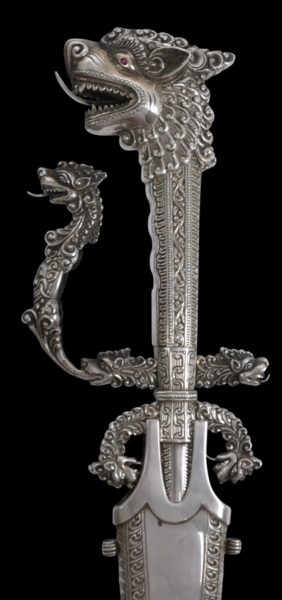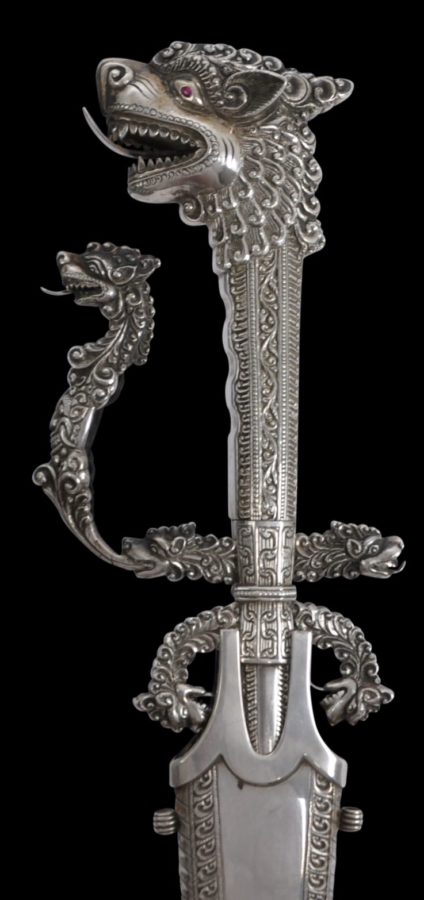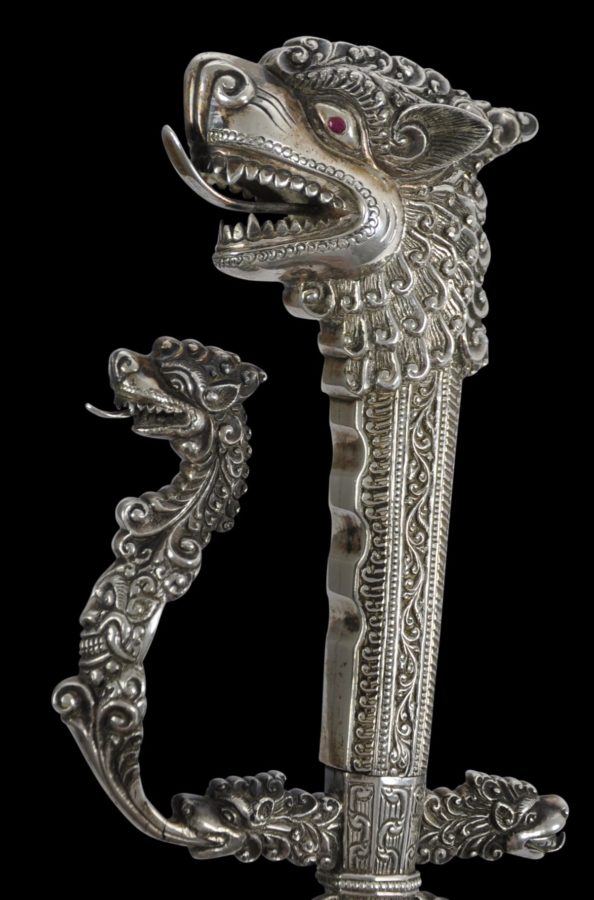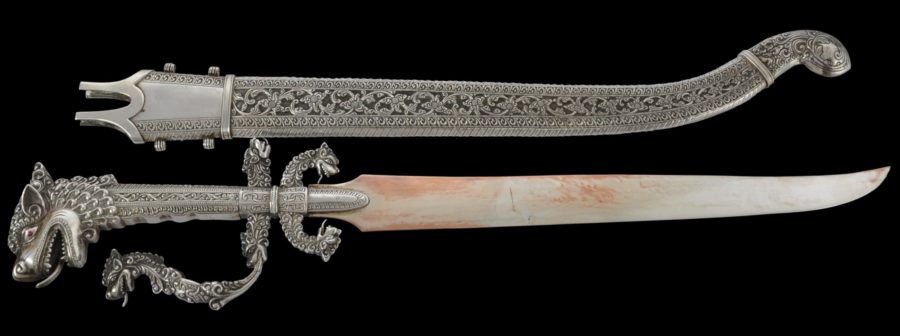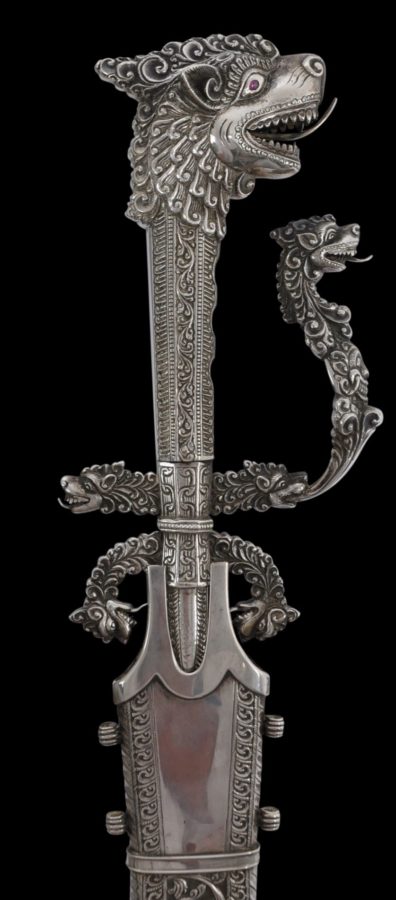This is a fine kasthane sword. The silver chiselling work is excellent. The hilt, the hand guard and the scabbard are all executed in very fine silverwork.
The eyes of the hilt are set with what are probably pink sapphires.
The blade is of silvered copper.
Kasthanes are ceremonial at best and were worn by Sri Lanka’s nobility. They were certainly not indeed for battle; indeed, the weakness of the blades of most would render the user at risk. Probably the more accurate way to describe then is as jewellery for men.
The kasthane is unique to Sri Lanka. It is a dress sword that was popular in both the central Kandy Kingdom and the low, coastal areas. Kasthanes found their way to Europe and elsewhere in the seventeenth and later centuries as highly decorative curios. Sir Alexander Popham, an English seventeenth century military figure, was painted in his equestrian portrait wearing a kasthane. Kasthanes have relatively weak blades; as dress swords they were intended to be ornamental and reality served as over-sized pieces of jewellery for Ceylonese aristocrats.
The kasthane here has a silver pommel chiselled as a typical simha (lion) head with a prominent crest made up of an entwined liya-pata motif. A long, silver, curved tongue projects between rows of naturalistically-rendered teeth from the simha’s mouth.
The snout on each side has a characteristic ‘S’ scroll. The eyes are large and as mentioned are set with stones. The ears are prominent and in leaf form.
The simha’s mane comprises a series of semi-circular whirls on top and a spectacular array of whirls about the neck. The rest of the neck comprises floral and foliate liya pata panels.
The narrow crossguard has two serapendiya-head quillon finials. An ‘S’-shaped knuckle guard issues from the mouth of one and this guard terminates with a prominent serapendiya head. The other serapendiya head quillon finial looks away from the back of the simha.
The scabbard is curved and chased or repoussed with rococo-esque scrolling floral and foliage patterns against a finely tooled ground. The chape is leafy and terminates with a bulbous scroll.
The kasthane here is in excellent condition. There are no losses and no repairs.
The example here is similar in form and motifs to one in the Hermitage Museum and illustrated in Obratztsov (2015, p. 124).
References
Caravana, J. et al, Rites of Power: Oriental Weapons: Collection of Jorge Caravana, Caleidoscopio, 2010.
Coomaraswamy, A.K., Mediaeval Sinhalese Art, Pantheon Books, 1956 reprint of the 1908 edition.
Obratztsov, V., Oriental Arms and Armour: In the Hermitage Collection, Saint Petersburg, The State Hermitage Publishers, 2015.
De Silva, P.H.D.H & S. Wickramasinghe, Ancient Swords, Daggers & Knives in Sri Lankan Museums, Sri Lanka National Museums, 2006.
Weereratne, N., Visions of an Island: Rare works from Sri Lanka in the Christopher Ondaatje Collection, Harper Collins, 1999.


